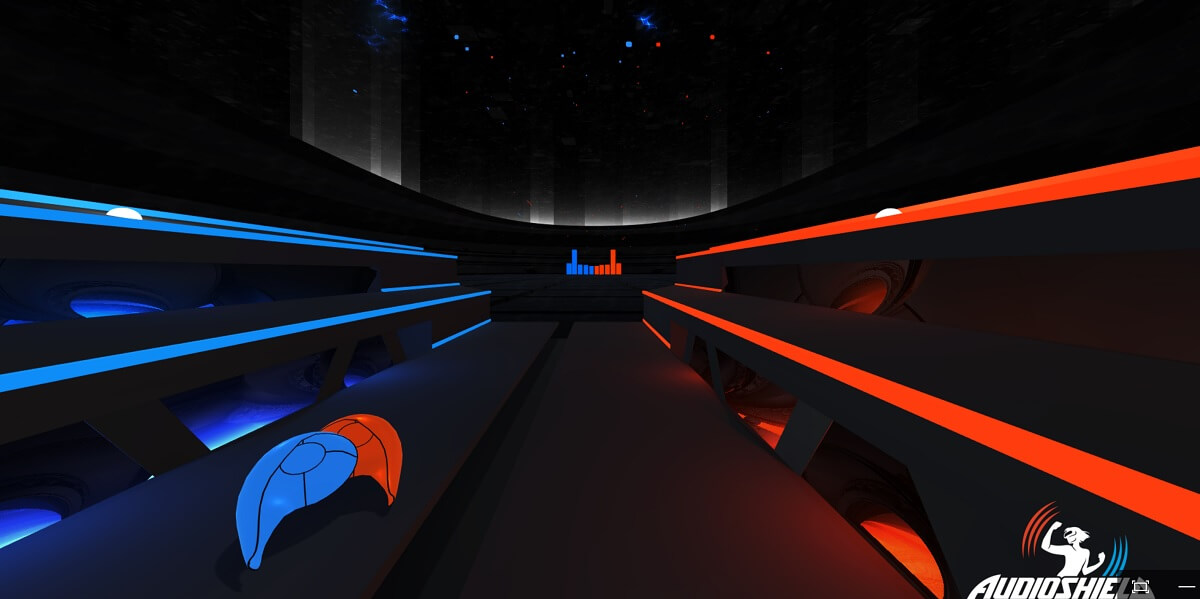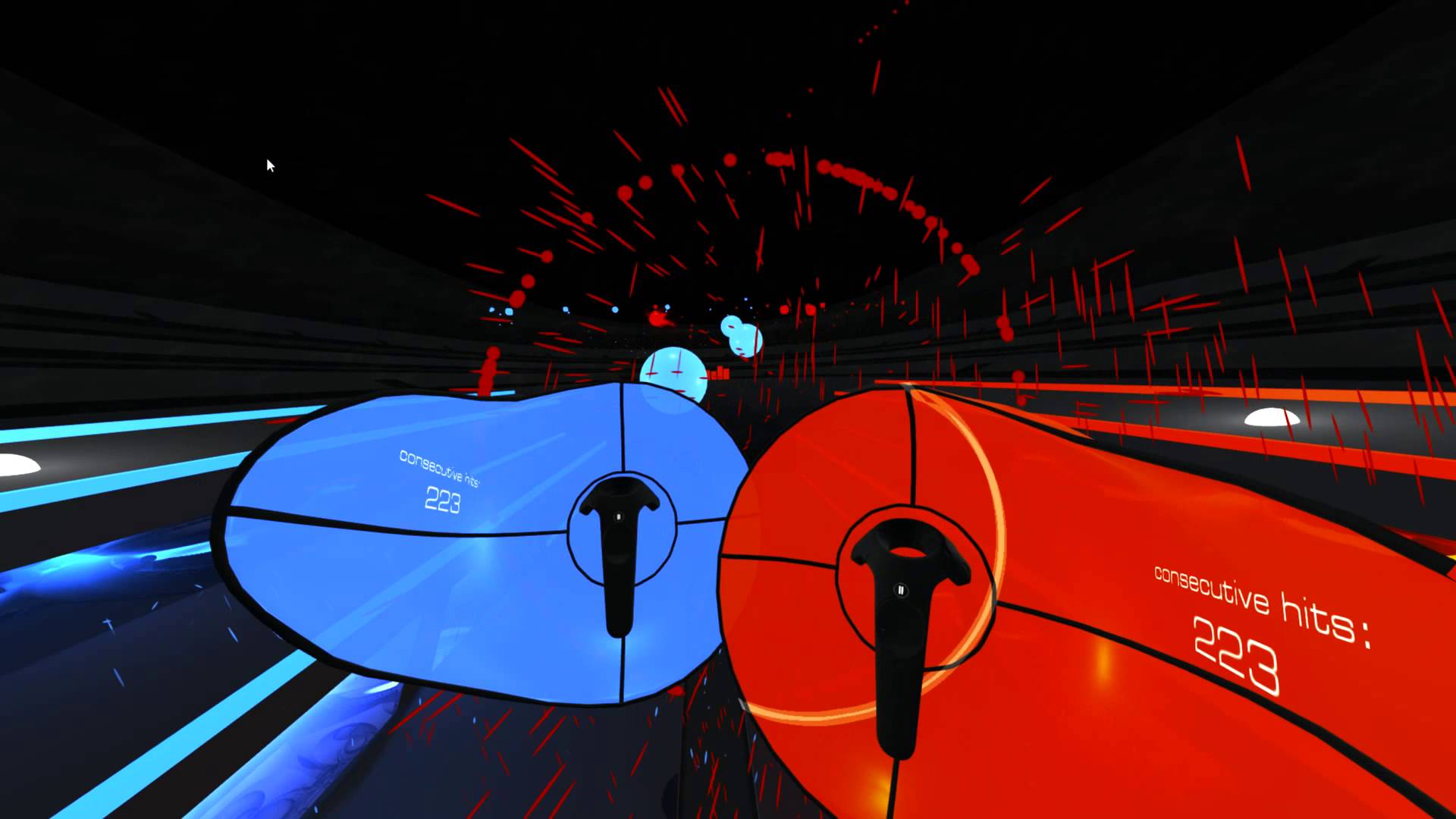When you think about immersive virtual reality experiences, your mind probably drifts to something like a detailed adventure game that lets you move around in a unique world or maybe even an experience that puts you in the cockpit of a fast and fierce spaceship. Chances are the first thing that comes to your mind isn’t a music game that has you blocking blobs that cascade down to the beat of whatever song you choose. Yet, here we are on Vive launch day and that’s the kind of game I’m writing about.
Audioshield is striking, intense, and downright fun to play.
Audioshield puts a red and blue shield in either of your hands and asks you to block giant blobs of either red, blue, or purple color as they rocket towards you. And that’s about it. It sounds simple because it is. But don’t confuse simplicity with monotony as they are not one in the same, especially in the case of Audioshield.
Not only does the game automatically adapt to whichever song you choose, it also pulls from a large collection of music online to make sure you’re discovering new music just as often as you’re punching the air. Which is great because due to how adaptive the gameplay is, it actually molds itself to fit any music genre you’re looking for.
However, despite that adaptability, the interface itself is incredibly cumbersome to navigate. The difference between difficulty levels in the menu for example is unclear at best. Several songs appear to have multiple difficulties that are identical, which could just be a minor bug, but it persisted for over a week. The names of the different types of shields are also not very descriptive and there’s no thumbnail preview at all to let me know what they actually look like.
Once you’re actually inside the game and playing a song, all of those minor annoyances fall away though and you’re left standing on a platform preparing for the onslaught before you. Notes typically fall in one of four ways: single red or blue bubbles, extended red or blue bubbles, large swaths of bubbles in a row, and large combined purple bubbles.
Audioshield can lose its appeal quickly and doesn’t have the same ease-of-use pick-up-and-play factor that make other music games so engaging.
Similar to his previous game, Audiosurf, Dylan Fitterer was able to create an addicting and rhythmic formula in Audioshield that keeps you coming back for more. The bubbles always seem to fall in a way that makes sense for the song at hand and do a great job of syncing with the audio just right so it almost feels as if you’re dancing to the music and not just punching the air. When you crank up the difficulty and pick some really intense songs you’ll feel the heat not just figuratively, but also literally as you can easily work up a sweat inside the stuffy headset.
But as fun as Audioshield is, it feels like a tiny slice of a larger game that we’ll likely never get to see. Just like any other rhythm-based music game, the exact same game mode over and over again can only remain fun for so long before it starts to wear thin. Each song delivers thrills in unique ways, but the thrills delivered between each song are often quite similar.
Part of what made games like Audiosurf, and even Harmonix’s Amplitude before it, so great and mesmerizing was how simple and fun they were to pick up and play for short or long sessions. They were excellent zone out games. For Audioshield, it’s the exact opposite. Each and every song requires such a hyper-focus degree of attention that even the easiest songs still require you to get up and physically move around. Don’t get me wrong – room scale VR is quite special – but Audioshield simply doesn’t have the same staying power as its predecessor because I don’t see myself casually booting up this game for a quick session between other activities. The inconvenience of clearing out space, booting up the Vive, and getting everything working properly only to play one or two songs a month from now seems like it would be more trouble than it’s worth a lot of the time.
Studio: Dylan Fitterer
Platform: HTC Vive
Price: $19.99
Comfort: Comfortable
Release Date: April 5th, 2016
—
Audioshield is striking, intense, and downright fun to play in short bursts. It’s a great evolution of the adaptive mindset behind Audiosurf and is one of the first successful implementations of rhythm-based gameplay to a VR platform. However, it can lose its appeal quickly and doesn’t have the same ease-of-use pick-up-and-play factor that make other music games so engaging and worth returning to over time. Perhaps it will be expanded into a more robust experience later on down the line.
Read our Game Review Guidelines for more information on how we arrived at this score.




























